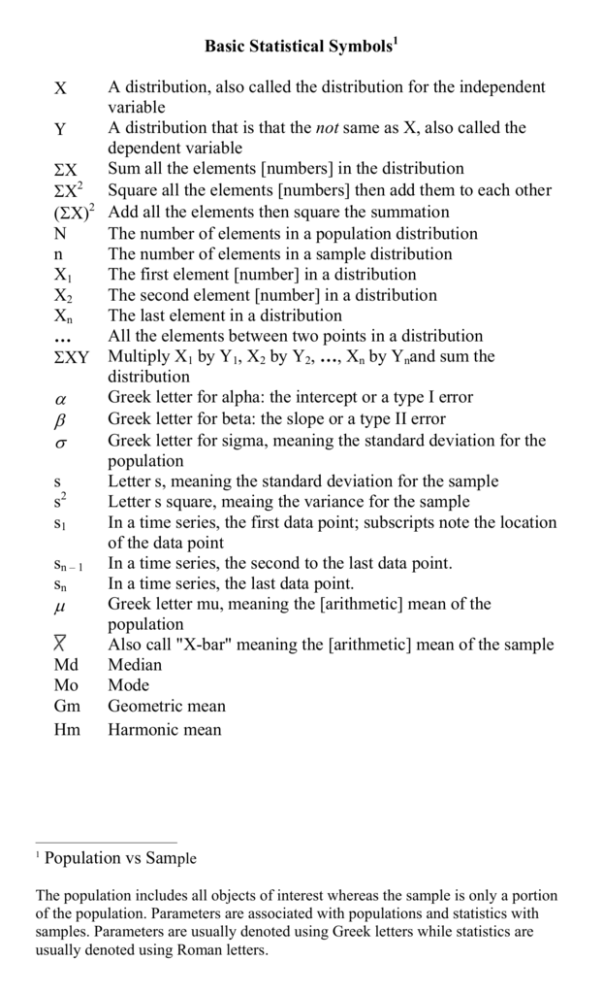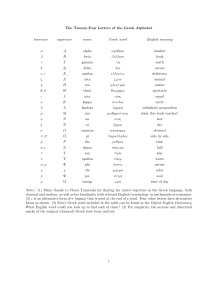basic statistical symbols
advertisement

Basic Statistical Symbols1 2 ()2 N n X1 X2 Xn … Y s s2 s1 sn – 1 sn Md Mo Gm Hm 1 A distribution, also called the distribution for the independent variable A distribution that is that the not same as X, also called the dependent variable Sum all the elements [numbers] in the distribution Square all the elements [numbers] then add them to each other Add all the elements then square the summation The number of elements in a population distribution The number of elements in a sample distribution The first element [number] in a distribution The second element [number] in a distribution The last element in a distribution All the elements between two points in a distribution Multiply X1 by Y1, X2 by Y2, …, Xn by Ynand sum the distribution Greek letter for alpha: the intercept or a type I error Greek letter for beta: the slope or a type II error Greek letter for sigma, meaning the standard deviation for the population Letter s, meaning the standard deviation for the sample Letter s square, meaing the variance for the sample In a time series, the first data point; subscripts note the location of the data point In a time series, the second to the last data point. In a time series, the last data point. Greek letter mu, meaning the [arithmetic] mean of the population Also call "X-bar" meaning the [arithmetic] mean of the sample Median Mode Geometric mean Harmonic mean Population vs Sample The population includes all objects of interest whereas the sample is only a portion of the population. Parameters are associated with populations and statistics with samples. Parameters are usually denoted using Greek letters while statistics are usually denoted using Roman letters.











